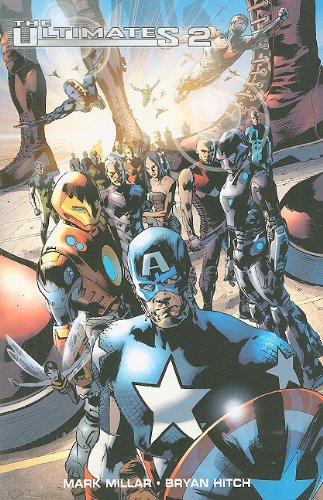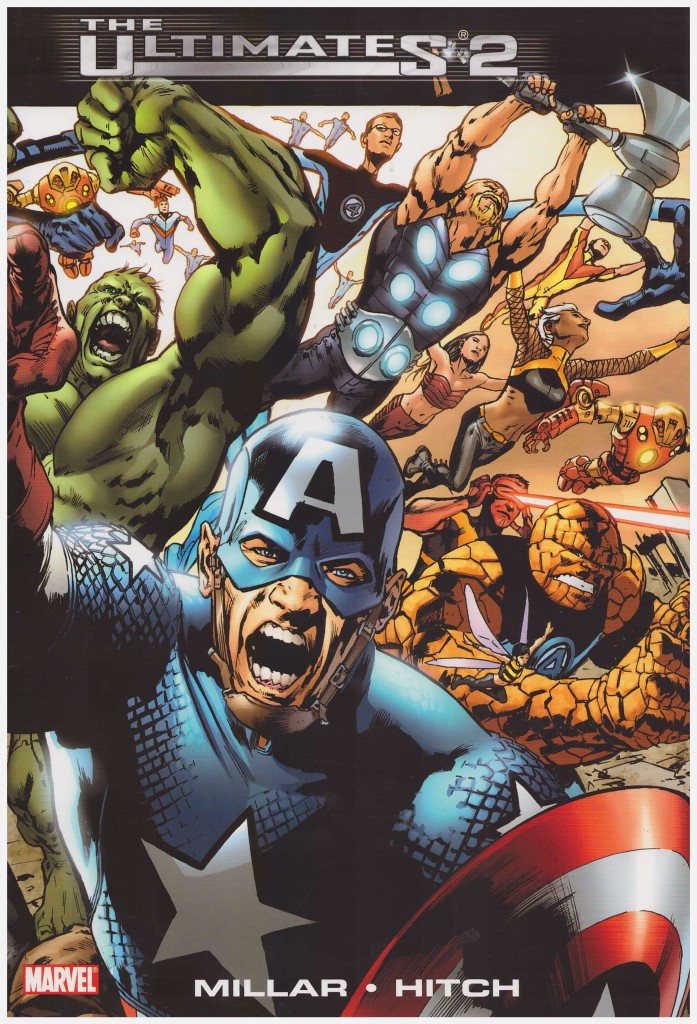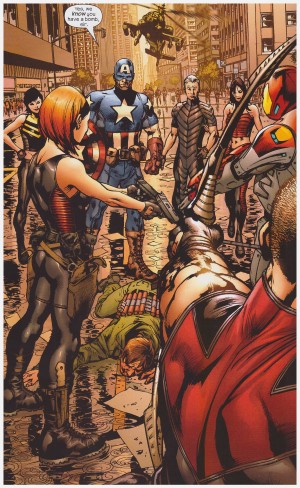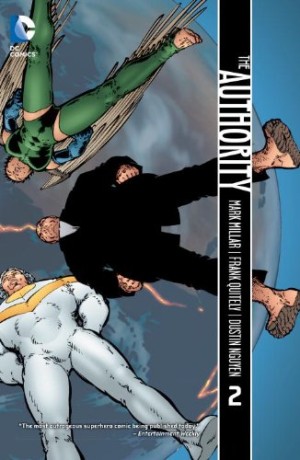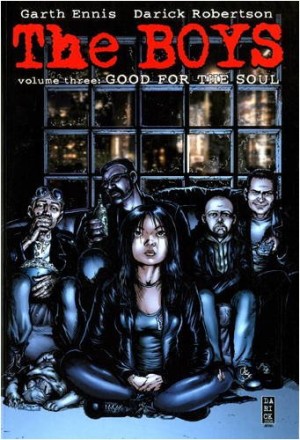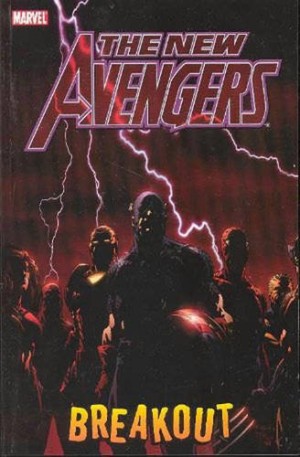Review by Jack Kibble-White
Mark Millar’s work has always operated at a sensory, not intellectual, level and few better press the right buttons. The signifiers of depth and complexity are replete throughout the The Ultimates 2 without there necessarily being any real subtext bubbling below the surface. This sounds like a criticism, but is intended as a compliment.
Although set a year later, tonally The Ultimates 2 picks up right where the first volume left off. The letterbox artwork and cinematic sense of location is still in place and the snappy dialogue is written by a man who has nothing left to learn about being taut. This sequel steps up machinations by focusing on the public perception of The Ultimates and how their enemies choose to use it against them. Tellingly, the first chapter ends, not with a slugfest, but Bruce Banner choking on his sandwich as a TV reporter reveals to the world that the scientist is in fact the Hulk’s alter ego.
With Banner standing trial for the Hulk’s crimes and Loki intent on destroying the Ultimates, there is a more substantial plot across the opening chapters than previously. Loki, Master of Manipulation lest we forget, has two strands to his plans: involving the team in combat, but more meaningfully through sabotage in the form of implanting a traitor within their ranks.
As ever, Bryan Hitch’s art is superb. Aided by Paul Neary, his consistency and obviously exemplary work rate shine through. There are some nice uses of digital effects as well, such as when Thor is zapped by Iron Man.
Millar is particularly adept at working out how the differing abilities of the various reversioned Marvel superheroes can interlock through a bit of sound planning. Having each character assigned a specific role gives the organisation a sense of veracity isolating it from the usual multi-hero get togethers, wherein all too often set pieces are just about whacking super villains hard enough to stop them getting back up again.
The massacre of one team member’s family is stark and bloody, beginning with the laser dot from a gun sight coming to rest on a forehead. It sets the tone for what is a tough resolution to this sequel. Nick Fury’s determination to root out the traitor results in a gritty struggle with Captain America, while the rest of the team variously battle philosophically or emotionally with the increasing complexities impinging upon what should be their simple mandate to protect the world.
Ultimately though, this is Mark Millar and so a whopping (at one moment, gatefold in size) great fight ensues at the end. The veritable hordes of Asgard are unleashed in an epic rain-strewn battle. It’s boldly illustrated by Bryan Hitch and Paul Neary and is the most grandiose set piece in the entire Ultimates canon.
We conclude with a charming coda – which is a welcome surprise. We are fleetingly sent to 1942, to allow Millar to execute one of those back to where it all began type circular endings. It’s brief, but memorable, demonstrating a mastery of economic storytelling just as acute when pathos, not action, is the intended effect.
If you haven’t previously liked The Ultimates, the slightly gratuitous introduction of Captain Britain, The X-Men, Daredevil and the Defenders isn’t going to change your mind, and in truth Millar has no intention of reaching out beyond his core audience. They love him and he loves knowing how to give them exactly what they want.
For those preferring a cheaper option this can be found as two paperbacks titled Gods & Monsters and Grand Theft America.
